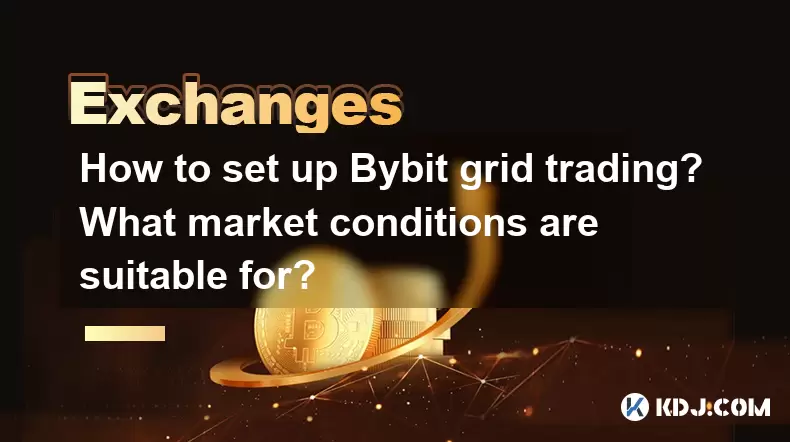-
 Bitcoin
Bitcoin $117500
2.15% -
 Ethereum
Ethereum $3911
6.19% -
 XRP
XRP $3.316
10.79% -
 Tether USDt
Tether USDt $1.000
0.01% -
 BNB
BNB $787.2
2.24% -
 Solana
Solana $175.2
4.15% -
 USDC
USDC $0.9999
0.00% -
 Dogecoin
Dogecoin $0.2225
8.40% -
 TRON
TRON $0.3383
0.28% -
 Cardano
Cardano $0.7868
6.02% -
 Stellar
Stellar $0.4382
9.34% -
 Hyperliquid
Hyperliquid $40.92
7.56% -
 Sui
Sui $3.764
7.63% -
 Chainlink
Chainlink $18.48
10.66% -
 Bitcoin Cash
Bitcoin Cash $582.1
1.88% -
 Hedera
Hedera $0.2601
6.30% -
 Avalanche
Avalanche $23.33
4.94% -
 Ethena USDe
Ethena USDe $1.001
0.02% -
 Litecoin
Litecoin $122.3
2.04% -
 UNUS SED LEO
UNUS SED LEO $8.969
-0.27% -
 Toncoin
Toncoin $3.339
0.86% -
 Shiba Inu
Shiba Inu $0.00001287
4.30% -
 Uniswap
Uniswap $10.43
7.38% -
 Polkadot
Polkadot $3.861
5.08% -
 Dai
Dai $1.000
0.02% -
 Bitget Token
Bitget Token $4.513
3.41% -
 Monero
Monero $267.7
-6.18% -
 Cronos
Cronos $0.1499
4.14% -
 Pepe
Pepe $0.00001110
5.15% -
 Aave
Aave $284.9
8.28%
How to set up Bybit grid trading? What market conditions are suitable for?
Grid trading on Bybit automates crypto trading by setting buy/sell orders at fixed intervals, profiting from market volatility within a specified range.
May 18, 2025 at 04:28 pm

Setting up grid trading on Bybit can be a powerful strategy for crypto traders looking to automate their trading process. Grid trading involves setting up a series of buy and sell orders at predetermined price levels, allowing traders to profit from the market's volatility. This article will guide you through the process of setting up grid trading on Bybit, as well as discuss the market conditions that are most suitable for this strategy.
Understanding Grid Trading
Grid trading is a strategy where traders place multiple buy and sell orders at fixed intervals within a specified price range. The goal is to profit from the natural fluctuations of the market. When the price moves up and down within this range, the grid trading bot automatically executes trades, buying low and selling high.
To set up grid trading on Bybit, you need to understand the key components of a grid trading strategy:
- Upper Limit: The highest price level in your grid.
- Lower Limit: The lowest price level in your grid.
- Grid Number: The number of price levels within your grid.
- Investment Amount: The total amount of cryptocurrency you are willing to invest in the grid.
Setting Up Grid Trading on Bybit
To start grid trading on Bybit, follow these steps:
Log into Bybit: Open your Bybit account and navigate to the trading section.
Select Grid Trading: On the trading page, find the "Grid Trading" tab and click on it.
Choose a Trading Pair: Select the cryptocurrency pair you want to trade. For example, BTC/USDT.
Set Parameters: Input the following parameters:
- Upper Limit: Enter the highest price you expect the market to reach.
- Lower Limit: Enter the lowest price you expect the market to reach.
- Grid Number: Decide on the number of grids you want to set up.
- Investment Amount: Specify the amount of cryptocurrency you want to invest.
Review and Confirm: Double-check all the parameters you've entered. Once satisfied, click "Confirm" to start the grid trading bot.
Monitoring and Adjusting Your Grid
After setting up your grid trading bot, it's important to monitor its performance. Bybit provides a dashboard where you can track the status of your grid trading bot, including the number of trades executed, profits, and losses.
If market conditions change, you may need to adjust your grid. Here’s how you can do it:
- Pause the Bot: If you want to make changes, pause the bot first to avoid any unintended trades.
- Adjust Parameters: Modify the upper and lower limits, grid number, or investment amount as needed.
- Resume the Bot: Once you’ve made your adjustments, resume the bot to continue trading.
Market Conditions Suitable for Grid Trading
Grid trading is most effective in certain market conditions. Here are the conditions that favor grid trading:
- Sideways Market: Grid trading performs best in a market that is moving sideways, with no strong upward or downward trends. In a sideways market, the price oscillates within a range, allowing the grid trading bot to buy low and sell high repeatedly.
- Stable Volatility: A market with stable volatility is ideal for grid trading. If the volatility is too high, the price may move out of your grid range too quickly, resulting in missed opportunities. Conversely, if the volatility is too low, the price may not move enough to trigger the buy and sell orders.
- No Major News Events: Avoid setting up grid trading bots during times of major news events, as these can cause sudden and significant price movements that can disrupt your grid.
Risks and Considerations
While grid trading can be profitable, it's important to be aware of the risks involved:
- Market Breakouts: If the market breaks out of your grid range, you may incur losses. It's crucial to set stop-loss orders to mitigate this risk.
- Fees: Each trade executed by the grid trading bot incurs trading fees. These fees can add up, especially if you are trading frequently.
- Over-Optimization: Be cautious about over-optimizing your grid parameters. While it might seem beneficial to fine-tune your grid to historical data, past performance does not guarantee future results.
Practical Example of Grid Trading on Bybit
Let's walk through a practical example of setting up a grid trading bot on Bybit for the BTC/USDT pair:
- Log into Bybit and navigate to the "Grid Trading" tab.
- Select BTC/USDT as the trading pair.
- Set the Upper Limit to $50,000 and the Lower Limit to $40,000.
- Choose a Grid Number of 10, which means the bot will set up 10 buy and sell orders within the $40,000 to $50,000 range.
- Enter an Investment Amount of 1 BTC.
- Review and Confirm the parameters, then click "Confirm" to start the bot.
In this example, the bot will automatically buy BTC when the price falls to the lower levels of the grid and sell BTC when the price rises to the upper levels of the grid. If the market remains within the $40,000 to $50,000 range, the bot will continuously execute trades, aiming to generate profits from the price fluctuations.
Frequently Asked Questions
Q: Can I run multiple grid trading bots on Bybit simultaneously?
A: Yes, Bybit allows you to set up and run multiple grid trading bots at the same time. Each bot can be configured with different parameters and trading pairs, allowing you to diversify your trading strategies.
Q: How do I know if my grid trading bot is performing well?
A: Bybit provides detailed performance metrics for your grid trading bots, including the number of trades executed, total profit, and total loss. Regularly review these metrics to assess the performance of your bot and make adjustments as needed.
Q: Is it possible to manually intervene in a grid trading bot's operations?
A: Yes, you can manually pause, adjust, and resume your grid trading bot at any time. This allows you to respond to changing market conditions or to fine-tune your strategy.
Q: What happens if the market moves outside my grid range?
A: If the market moves outside your grid range, the bot will stop executing trades until the price returns to within the specified range. To mitigate potential losses, consider setting stop-loss orders to automatically close your positions if the price moves too far outside your grid.
Disclaimer:info@kdj.com
The information provided is not trading advice. kdj.com does not assume any responsibility for any investments made based on the information provided in this article. Cryptocurrencies are highly volatile and it is highly recommended that you invest with caution after thorough research!
If you believe that the content used on this website infringes your copyright, please contact us immediately (info@kdj.com) and we will delete it promptly.
- XRP ETF, Bitcoin ETF, and Japan: A New Era for Crypto Investing?
- 2025-08-08 14:30:12
- Crypto, Congress, and Bills: Navigating the Regulatory Landscape in 2025
- 2025-08-08 14:30:12
- Union Jack Oil, Unused Gas, and Bitcoin: A New York Minute on UK's Crypto-Energy Play
- 2025-08-08 14:50:12
- Bitcoin Price: Bullish Flag Points to $123K Breakout?
- 2025-08-08 14:50:12
- Crypto Group's WNBA Dildo Toss: Meme Coin Mania or Just Plain Dumb?
- 2025-08-08 14:55:13
- Stablecoins, Hong Kong, and On-Chain Finance: Navigating the Regulatory Maze
- 2025-08-08 12:30:12
Related knowledge

How to use margin trading on Poloniex
Aug 08,2025 at 09:50am
Understanding Margin Trading on Poloniex

How to use advanced trading on Gemini
Aug 08,2025 at 04:07am
Understanding Advanced Trading on GeminiAdvanced trading on Gemini refers to a suite of tools and order types designed for experienced traders who wan...

How to deposit USD on Bitstamp
Aug 07,2025 at 05:18pm
Understanding Bitstamp and USD DepositsBitstamp is one of the longest-standing cryptocurrency exchanges in the industry, offering users the ability to...

How to use the Kraken Pro interface
Aug 08,2025 at 09:57am
Understanding the Kraken Pro Interface LayoutThe Kraken Pro interface is designed for both novice and experienced traders seeking a streamlined experi...

How to find my transaction ID on Gemini
Aug 08,2025 at 12:50am
Understanding the Transaction ID in Cryptocurrency ExchangesA transaction ID (TXID) is a unique alphanumeric string that identifies a specific transfe...

How to calculate crypto taxes from Binance
Aug 08,2025 at 07:56am
Understanding Cryptocurrency Taxation on BinanceCalculating crypto taxes from Binance requires a clear understanding of how tax authorities classify d...

How to use margin trading on Poloniex
Aug 08,2025 at 09:50am
Understanding Margin Trading on Poloniex

How to use advanced trading on Gemini
Aug 08,2025 at 04:07am
Understanding Advanced Trading on GeminiAdvanced trading on Gemini refers to a suite of tools and order types designed for experienced traders who wan...

How to deposit USD on Bitstamp
Aug 07,2025 at 05:18pm
Understanding Bitstamp and USD DepositsBitstamp is one of the longest-standing cryptocurrency exchanges in the industry, offering users the ability to...

How to use the Kraken Pro interface
Aug 08,2025 at 09:57am
Understanding the Kraken Pro Interface LayoutThe Kraken Pro interface is designed for both novice and experienced traders seeking a streamlined experi...

How to find my transaction ID on Gemini
Aug 08,2025 at 12:50am
Understanding the Transaction ID in Cryptocurrency ExchangesA transaction ID (TXID) is a unique alphanumeric string that identifies a specific transfe...

How to calculate crypto taxes from Binance
Aug 08,2025 at 07:56am
Understanding Cryptocurrency Taxation on BinanceCalculating crypto taxes from Binance requires a clear understanding of how tax authorities classify d...
See all articles

























































































